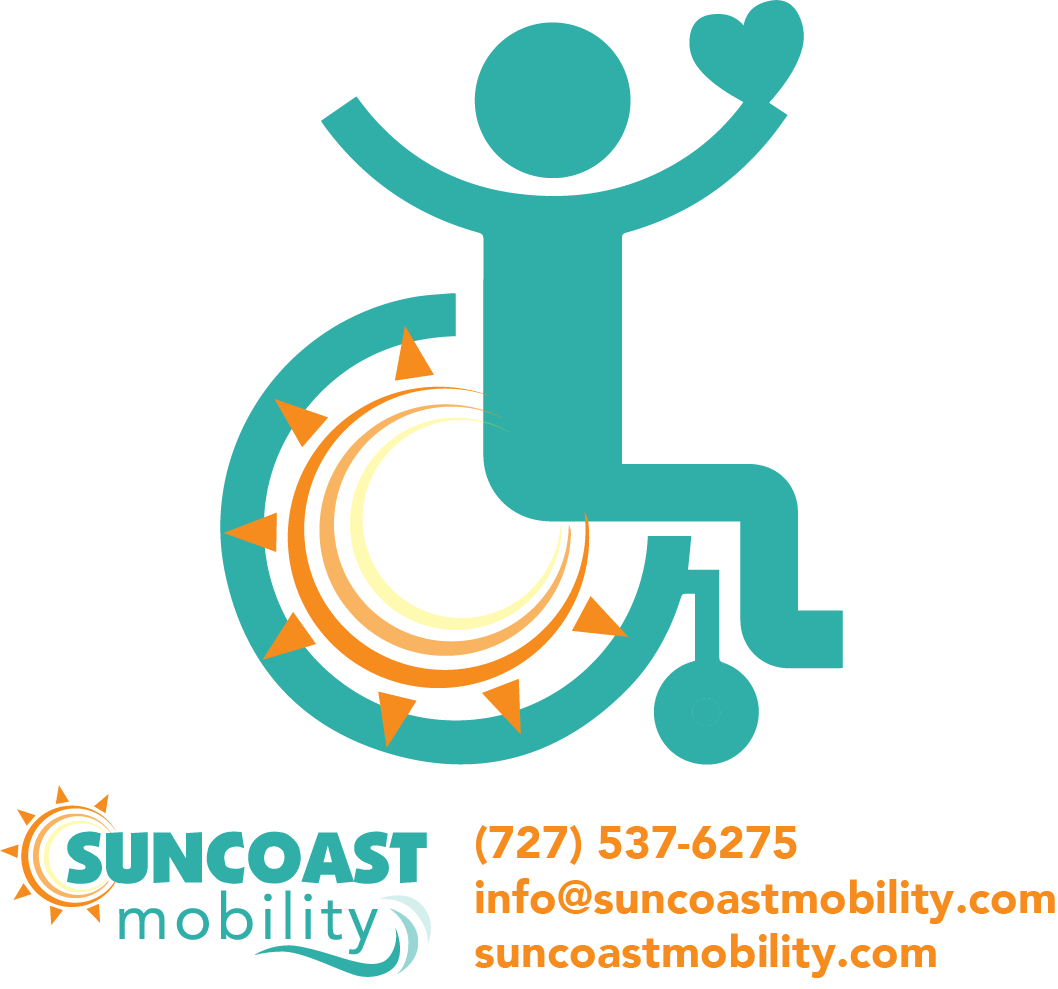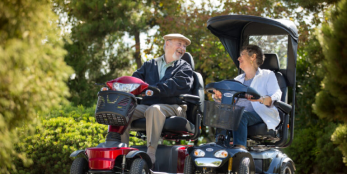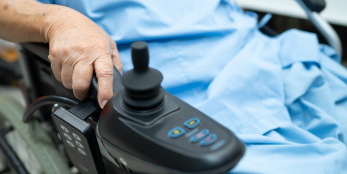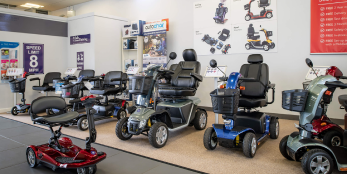Table of contents
What Power Wheelchairs Can Fit in the Trunk of a Car?
Power wheelchairs are essential for individuals who need mobility support but want to remain as independent as possible. One of the most common questions from shoppers is: What power wheelchairs can fit in the trunk of a car? Whether you're heading to a doctor’s appointment, running errands, or traveling, having a portable, trunk-compatible power wheelchair can significantly enhance your freedom and flexibility.
In this guide, we’ll cover the types of power wheelchairs that fit in car trunks, key features to look for, and recommend a few top-rated models. We’ll also share practical tips for loading and transporting your chair safely and efficiently.
Why Trunk Compatibility Matters
Not all power wheelchairs are designed for portability. Full-size models can be heavy, bulky, and may require a vehicle lift for transport. But travel and folding power wheelchairs are specifically designed with portability in mind—allowing users or caregivers to lift and store them in car trunks with relative ease.
These models often fold, collapse, or disassemble into compact pieces, making them ideal for everyday use, travel, and transporting in standard vehicles.
♿ Types of Power Wheelchairs That Fit in Car Trunks
1. Folding Power Wheelchairs
Folding power chairs collapse into a single compact unit, often without needing to remove parts. Many models fold similarly to a baby stroller or suitcase, making them ideal for trunk storage.
Pros:
Quick folding for easy transport
No need to disassemble
Lightweight frames (some under 60 lbs)
Cons:
Shorter driving range
Smaller seating or support features
Typically lower weight capacity
Examples:
-
Pride Jazzy Carbon
2. Disassembling Power Wheelchairs
Some travel power chairs can be disassembled into several components—typically the seat, battery, base, and joystick. These are easier to lift piece by piece, especially for caregivers or users with limited strength.
Pros:
-
Higher weight capacity than folding models
-
Better comfort and seating options
-
Often more durable for daily use
Cons:
-
Takes more time to break down and reassemble
-
More parts to manage and store
Examples:
-
Golden LiteRider Envy
-
Shoprider Jimmie Power Chair
-
Drive Cirrus Plus EC (compact model)
3. Ultra-Lightweight Power Chairs
Ultra-light power wheelchairs are built using aluminum or carbon fiber frames and may weigh under 45 pounds without batteries. These are great for users who travel often and need a chair that can be handled without assistance.
Pros:
Extremely light and portable
Airline-approved battery options
Designed for quick transport
Cons:
Smaller frame sizes
Limited support features
Examples:
Travel Buggy City 2 Plus
Porto Mobility Ranger Quattro
🔑 Key Features to Consider for Trunk Fit
Choosing a power wheelchair that fits in your trunk isn’t just about dimensions. Here are the most important features to look for:
✅ 1. Total Weight & Heaviest Component
Why It Matters:
Even if it fits in your trunk, a chair may be too heavy to lift without assistance.
What to Look For:
-
Total weight under 60 lbs (for one-piece folding chairs)
-
Heaviest disassembled part under 40 lbs
-
Removable battery and seat
✅ 2. Folded or Disassembled Dimensions
Why It Matters:
Trunk size varies—especially between compact cars and SUVs.
What to Look For:
-
Folded dimensions in the product specs
-
Fold-flat frame or collapsible joystick
-
Ability to remove footrests or armrests
✅ 3. Folding or Breakdown Mechanism
Why It Matters:
If the chair is complicated to fold or disassemble, it may not be practical for regular travel.
What to Look For:
-
One-touch or auto-folding mechanisms
-
Tool-free disassembly
-
Easy reassembly process
✅ 4. Battery Type & Placement
Why It Matters:
Battery size affects portability and whether your chair is airline-approved.
What to Look For:
-
Lithium-ion batteries under 300Wh
-
Removable battery pack
-
Easy access to the battery compartment
✅ 5. Frame Material & Durability
Why It Matters:
Frequent lifting and storage can cause wear. High-quality materials last longer.
What to Look For:
-
Aluminum or carbon fiber frames
-
Reinforced folding joints
-
Anti-corrosion features
✅ 6. Comfort vs. Bulk
Why It Matters:
Portable models sometimes cut corners on comfort—choose wisely if you use it for extended periods.
What to Look For:
-
Cushioned, ergonomic seating
-
Adjustable footrests and armrests
-
Suspension or anti-tip wheels
✅ 7. Steering & Maneuverability
Why It Matters:
A portable chair should still offer tight turns and reliable control.
What to Look For:
-
Joystick placement flexibility (left/right side)
-
Tight turning radius
-
Programmable speed settings
✅ 8. Storage & Accessories
Why It Matters:
Compact designs often sacrifice storage, but some add functionality through smart features.
What to Look For:
-
Under-seat storage pouches
-
USB ports, cup holders, or rear bags
-
Travel covers or padded carrying bags
✅ 9. Tool-Free Setup
Why It Matters:
Simplifies daily use and makes it easier for caregivers to assist.
What to Look For:
-
Snap-on joystick and battery
-
Fold-down footrests
-
Quick-connect battery terminals
🚗 Best Vehicles for Transporting Power Chairs
Some vehicle types are more trunk-friendly than others. Here are general categories and examples:
SUVs & Crossovers (most flexible):
-
Subaru Outback
-
Toyota RAV4
-
Honda CR-V
Hatchbacks & Wagons:
-
Kia Soul
-
Toyota Prius
-
Volkswagen Golf
Sedans with Fold-Down Seats:
-
Honda Accord
-
Hyundai Sonata
-
Nissan Altima
🚗 Tips for Loading a Power Wheelchair into a Car Trunk
1. Use a Lightweight Portable Ramp
Why: Reduces the need to lift the chair.
Look for: Aluminum construction, non-slip surface, 5–6 feet length.
2. Try a Portable Wheelchair Lift
Types:
-
Electric hoists
-
Manual lifts
-
Hitch-mounted lifts (for SUVs)
Pros: Minimal effort, safer for daily use
Cons: Higher cost, possible installation required
3. Disassemble First, If Possible
Steps:
-
Remove the seat or joystick
-
Take out the battery
-
Separate the base
Tip: Load heaviest parts near the trunk opening for easier access.
4. Use Padding or Mats
What Works:
-
Folded blanket
-
Rubber mat
-
Yoga mat
Why: Prevents scratches and helps parts slide more easily.
5. Invest in a Carrying Bag or Cover
Pros:
-
Keeps chair clean
-
Easier to grip with handles
-
Adds a layer of protection
6. Practice Before You Travel
Why It Matters:
Learning how to load your chair efficiently avoids stress during trips.
Try:
-
Timing yourself
-
Testing different trunk arrangements
-
Practicing with your caregiver
7. Don’t Hesitate to Ask for Help
Mobility is about independence—but safety comes first.
Suggestions:
-
Ask a friend or caregiver
-
Seek airport or hotel staff assistance
-
Consider professional vehicle adaptations
FAQs About Trunk-Compatible Power Chairs
Can a power wheelchair fit in a compact car?
Yes, but only certain models. Look for folding or ultra-light chairs.
Do I need a lift for a power chair?
Not necessarily. Many travel models can be lifted or rolled in with a ramp.
Are portable power chairs durable enough for everyday use?
Yes—just make sure the weight capacity and frame materials match your needs.
Can I fly with a power wheelchair?
Many folding power chairs with lithium-ion batteries under 300Wh are airline-approved.
Final Thoughts
Power wheelchairs that fit in the trunk of a car offer incredible convenience for active users, travelers, and caregivers alike. Whether you go for a folding model or one that breaks down into parts, the right chair can restore mobility and independence—without requiring a van or heavy lift system.
Take the time to compare features, test drive if possible, and ensure your choice suits both your medical needs and travel style. With the right chair and setup, you're free to go wherever life takes you—comfortably, confidently, and independently.








